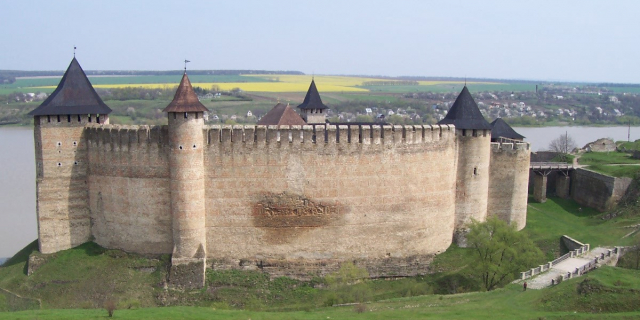Palatul Culturii din Iași
( Palace of Culture (Iași) )The Palace of Culture (Romanian: Palatul Culturii) is an edifice located in Iași, Romania. The building served as Administrative and Justice Palace until 1955, when its destination was changed, being assigned to the four museums nowadays united under the name of Moldavia National Museum Complex. Also, the building houses the Cultural Heritage Conservation-Restoration Centre, and hosts various exhibitions and other events.
The Palace of Culture is listed in the National Register of Historic Monuments.
 The former Princely Palace of Moldavia (later renamed Administrative Palace) after the last renovation (1883)
The former Princely Palace of Moldavia (later renamed Administrative Palace) after the last renovation (1883)Located in the perimeter of the mediaeval Princely Court of Moldavia (from 1434), the construction was conceived as a rebuilding and expansion project of the former Princely Palace of Moldavia, dated to the time of Prince Alexandru Moruzi (1803–1806, architect Johan Freywald), and renovated by Prince Mihail Sturdza (1841–1843, architect Nicolae Singurov), from which it preserved the foundations and first two floors.[1][2] It was from this latter building that the Palace inherited the legend of the 365 rooms, as many as the days within one year.[3]
The Romanian architect I.D. Berindei was assigned to plan and conduct the rebuilding process. Unlike the old palace, built in a neoclassical style, Berindei chose to design it in a flamboyant Neo-Gothic style.
Started in 1906–1907, the reconstruction works were halted during World War I, due to the limitation of resources, but the unfinished building sheltered Romanian and Russian troops, and different public institutions and military hospitals.[2] The monument was finally completed on 11 October 1925, and officially inaugurated one year later, by King Ferdinand I of Romania.
The building housed the County Law Court and other public institutions until 1955, when it received an exclusive cultural function. During World War II, the Palace sheltered German troops, and then, Soviet troops.
In 1975–1977, the wood bridging from the last floor was replaced with a cement one, fixed with steel netting. The new bridging sustained the monument during the earthquake of 1977, but the bridging from the first floor, the walls, the ornaments and the relief works were affected. A large-scale restoration project, considered one of the most complex in Romania since 1990, began in 2008.[4] The main works were completed in April 2016.[5]
Between 1955 and 2010, the Palace of Culture also hosted the main branch of the Iași County Library.[6]


























Add new comment